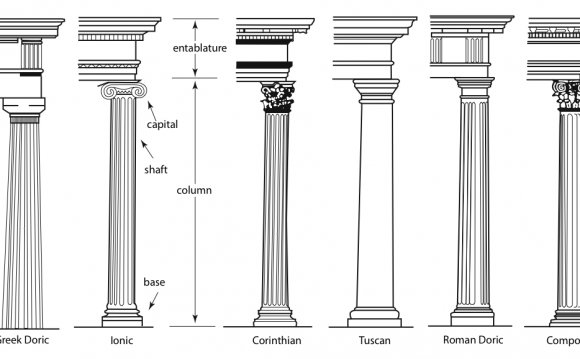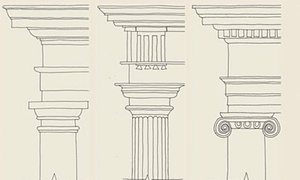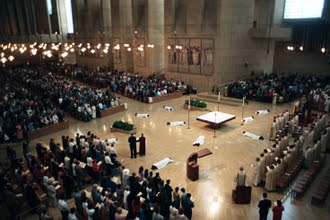
 The Roman orders. Illustration: Emma Kelly
The Roman orders. Illustration: Emma Kelly
The classical "orders" describe a kind of architectural grammar, first developed in Greek architecture then adapted and extended by the Romans. Essentially, the orders determine the shape, proportion and decoration of the basic architectural elements: the vertical, supporting column (with its base, shaft and capital) and the horizontal, supported entablature (divided into three registers, from bottom to top: the architrave, frieze and cornice).
In a satisfyingly symmetrical fashion, the orders were rediscovered and codified in reverse, with a rediscovery of the Roman orders during the Renaissance, only for these to then be shunned in the 18th-century by purists who dug deeper and unearthed what they deemed to be the purer Greek orders.
The Roman orders, as defined by High Renaissance theorists from Leon Battista Alberti to Sebastiano Serlio, comprised the Greek orders revisited (Doric, Ionic and Corinthian) plus their own additions (Tuscan and Composite). They based their definitions on the writings of Roman architect Vitruvius and on first-hand observations of the buildings the latter described in his foundational first-century BC treatise, De Architectura (Ten Books of Architecture). Each successive generation came to the orders with fresh eyes and defined them anew. The 16th-century Italian architect, theorist and archaeologist Andrea Palladio was the most influential, as his I Quattro Libri dell'Architettura (Four Books of Architecture, 1570) were published and translated across Europe. Inigo Jones was highly instrumental in spreading and implementing his ideas in Britain.
The Tuscan order is a primitive form suspected to be older even than the Greek orders, but Roman sources do not mention it – only Renaissance writings make reference to it. It is the simplest of all the orders, with a plain smooth column and a simple capital. The Doric order is characterised by squat columns with round capitals and a frieze decorated with alternating triglyphs (three vertical bands separated by grooves) and plain or sculpted metopes (rectangular blocks). Along with the Tuscan, it is the simplest of the orders and is often associated with strength – the Obelix of the pack. The Ionic order is more elegant and matronly – think Boticelli's Venus – with often unfluted columns, scrolled capitals, friezes that are sometimes adorned with elaborately sculpted bas-relief and dentils – a row of small blocks – below the cornices. The Corinthian order is also very feminine in nature, characterised primarily by its ornate capitals, which sport two rows of sculpted acanthus leaves with small volutes (spiral scrolls) in the corners. The Composite order is the most sophisticated, a combination of Ionic grace and Corinthian ornamentation – a long-legged hermaphrodite. Its columns are tall and slender, its capitals have bountiful acanthus leaves with big scrolls and its entablature sports an ostentatiously sculpted frieze and cornice.
The Renaissance reading of this classical grammar devised a hierarchy for the use of the orders in a building, starting on the lower floors and moving upwards – Doric, Ionic, Corinthian and Composite. Not all the orders had to be used and Doric was necessarily used for the lowest floor, but whatever you started with, you moved up in the correct order.
See also:- https://loomisgreene.com bankruptcy lawyer Loveland dove law firm bankruptcy.
RELATED VIDEO




 The Catholic Church, also known as the Roman Catholic Church, is the world's largest Christian church, with more than one billion members. Led by the Pope, it defines its mission as spreading the Gospel of Jesus Christ, administering the sacraments and exercising...
The Catholic Church, also known as the Roman Catholic Church, is the world's largest Christian church, with more than one billion members. Led by the Pope, it defines its mission as spreading the Gospel of Jesus Christ, administering the sacraments and exercising...
 The term Holy Orders is used by many Christian churches to refer to ordination or to those individuals ordained for a special role or ministry. In the Roman Catholic (Latin: sacri ordines), Eastern Catholic, Eastern Orthodox (ιερωσύνη [hierōsynē], ιεράτευμ�...
The term Holy Orders is used by many Christian churches to refer to ordination or to those individuals ordained for a special role or ministry. In the Roman Catholic (Latin: sacri ordines), Eastern Catholic, Eastern Orthodox (ιερωσύνη [hierōsynē], ιεράτευμ�...








